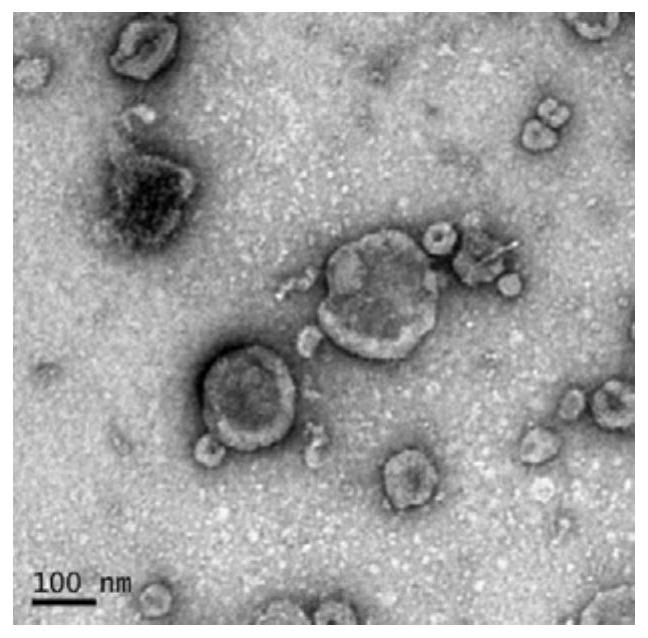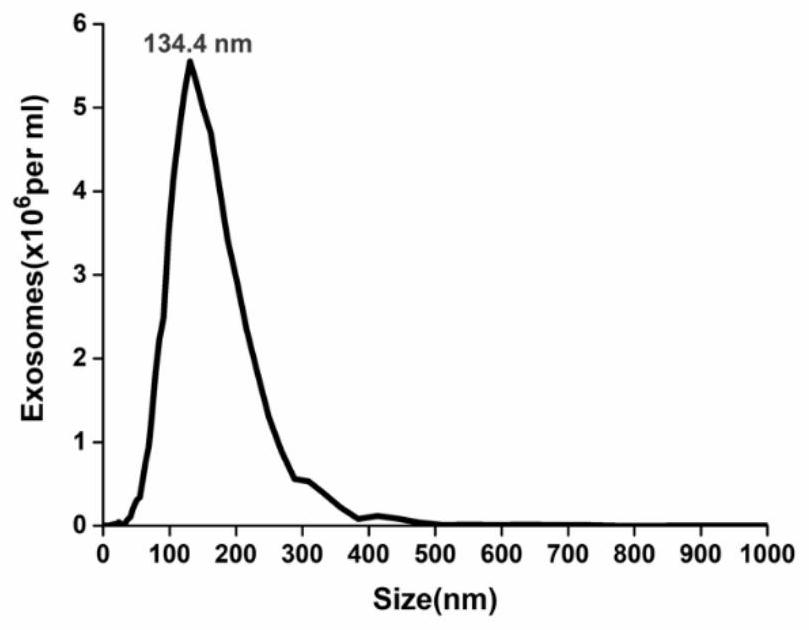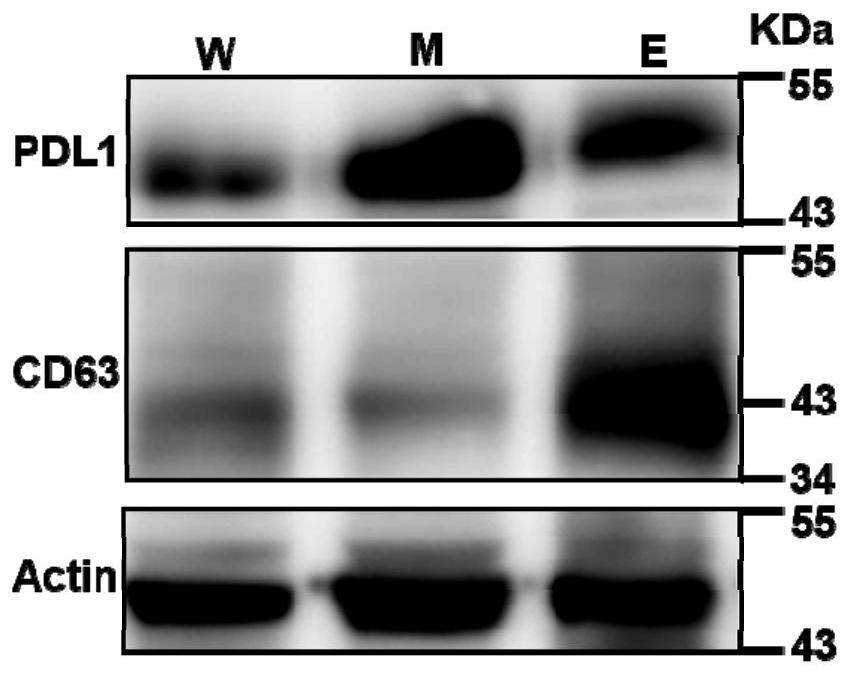A method for detecting PD-L1 protein on the surface of extracellular vesicles by nucleic acid aptamer of programmed death receptor-ligand 1
A technology of PD-L1 and programmed death, which is applied in the field of detecting PD-L1 protein on the surface of extracellular vesicles by nucleic acid aptamers of programmed death receptor-ligand 1, which can solve the cumbersome detection method steps and large sample consumption , Complicated and time-consuming operations and other issues, to achieve the effect of affordable price, high sensitivity, fast and efficient detection
- Summary
- Abstract
- Description
- Claims
- Application Information
AI Technical Summary
Problems solved by technology
Method used
Image
Examples
Embodiment 1
[0035] Example 1 Extraction of exosomes secreted by melanoma cell line A375 by differential centrifugation
[0036] For exosomes extracted from the culture supernatant of the melanoma cell line A375, avoiding interference from exosomes in fetal bovine serum, bovine exosomes were obtained by centrifuging fetal bovine serum overnight at 100,000 × g to remove exosomes. Human fetal bovine serum (FBS). Then, cells were cultured at 37°C in medium supplemented with 10% exosome-depleted FBS and 1% (v / v) penicillin-streptomycin. After 60 h of incubation, the cell culture supernatant was collected and centrifuged at 2000 x g for 20 min at 4 °C (Eppendorf, 5424R) to remove cells and cell debris, and the supernatant was collected and centrifuged at 16500 x g for 45 min at 4 °C To remove a large number of microvesicles (Eppendorf, 5424R). The microvesicle pellet was resuspended in PBS and stored in a refrigerator at 4°C. The supernatant was centrifuged at 100,000g for 2 hours at 4°C to ...
Embodiment 2
[0037] Example 2 Morphological characterization of exosomes secreted by melanoma cell line A375
[0038] To identify exosomes, morphological analysis of exosomes is required. Then, in order to characterize the purified vesicles as exosomes, it can be characterized by transmission electron microscopy and nanoparticle tracking analyzer. First, the shape and size of the exosomes were characterized by transmission electron microscopy. The specific operation: the exosomes were dropped on the carbon-coated copper grid and allowed to stand for 1 minute (use tweezers to clamp the copper grid lightly to prevent the copper grid from After staining with 2% uranyl acetate at room temperature for 1 minute, blot the dye solution along the edge with filter paper, put the copper grid under the lamp and bake it for 10 minutes, and use a transmission electron microscope (Tecnai, G2spirit FEI, USA) observed and photographed. As for the concentration and particle size distribution of exosomes, ...
Embodiment 3
[0040] Example 3 Verification that exosomes secreted by the melanoma cell line A375 express PD-L1
[0041] After successful extraction of exosomes, it is important to characterize the proteins expressed by the exosomes, such as CD63 and PD-L1, which can be identified by western blotting. Use 12% SDS-PAGE electrophoresis analysis, load cell lysate (W), microvesicles (M) and exosomes (E) respectively, the total amount of protein loaded is equal, and the three gels run in parallel; then transfer to nitric acid On the cellulose membrane, the blot was blocked with blocking buffer (Beyotime Biotechnology) for 1 hour at room temperature, and after washing, it was incubated with PD-L1, CD63, and Actin primary antibodies at 4°C overnight. After washing, HRP-conjugated The secondary antibody (Cell Signaling Technology) was incubated at room temperature for 2 hours; after washing, the blot on the color membrane was developed with ECL detection reagent (Pierce), and the chemiluminescence ...
PUM
| Property | Measurement | Unit |
|---|---|---|
| particle size | aaaaa | aaaaa |
Abstract
Description
Claims
Application Information
 Login to View More
Login to View More - R&D
- Intellectual Property
- Life Sciences
- Materials
- Tech Scout
- Unparalleled Data Quality
- Higher Quality Content
- 60% Fewer Hallucinations
Browse by: Latest US Patents, China's latest patents, Technical Efficacy Thesaurus, Application Domain, Technology Topic, Popular Technical Reports.
© 2025 PatSnap. All rights reserved.Legal|Privacy policy|Modern Slavery Act Transparency Statement|Sitemap|About US| Contact US: help@patsnap.com



